#Dianthus armeria
Explore tagged Tumblr posts
Photo

Deptford Pink Dianthus armeria Caryophyllaceae
Photograph taken on September 23, 2022, at Marmora and Lake, Ontario, Canada.
#wildflowers of southern ontario#Deptford Pink#pink#Dianthus armeria#Dianthus#Caryophyllaceae#Marmora and Lake#Marmora#Ontario#Canada#wildflowers#wildflower#flowers#flora
94 notes
·
View notes
Text

Dianthus armeria / Deptford Pink on the Flatirons Vista Trail in Boulder, CO
#Dianthus armeria#Dianthus#caryophyllaceae#Deptford Pink#Grass pink#Pink#Flowers#Plants#Nature photography#photography#photographers on tumblr#Flatirons Vista Trail#Flatirons#The Flatirons#Flatiron#Boulder#Boulder CO#boulder colorado#Colorado#🌺🌻
8 notes
·
View notes
Text
Hot And Dry Wildflower Walk, 6-4-23
Leucanthemum vulgare (Oxeye Daisy) on 6-4-23, #943-60. Hello, everyone! I hope this post finds you well. I decided to go for a wildflower walk on Sunday afternoon even though it was bright and sunny and the temperature was already almost 90° F. There was a nice breeze, so it wasn’t so bad. We haven’t had much rain and it seems many of the wildflowers I usually see are non-existent. Only the…
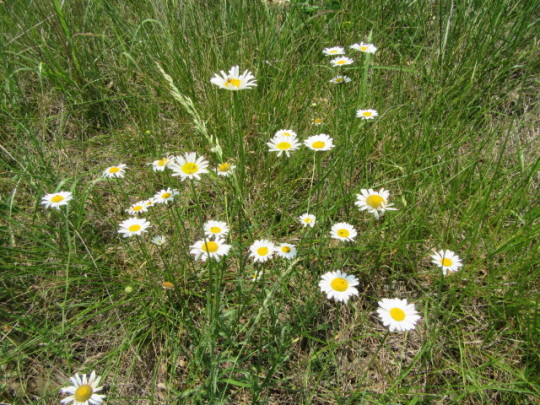
View On WordPress
#Achillea millefolium (Common Yarrow)#Allium vineale (Field or Wild Garlic)#Apocynum cannabinum (Hemp Dogbane)#Argynnis cybele (Great Spangled Fritillary)#Asclepias purpurascens (Purple Milkweed)#Conium maculatum (Poison Hemlock)#Cornus drummondii (Roughleaf Dogwood)#Dianthus armeria (Deptford Pink)#Dichanthelium clandestinum (Deertongue)#Elephantopus carolinianus (Leafy Elephant&039;s Foot)#Elmus virginicus (Virginia Wildrye)#Erigeron annuus (Annual or Daisy Fleabane)#Florinda coccinea (Black-tailed Red Sheetweaver)#Galium aparine (Cleavers/Catchweed Bedstraw)#Helenium flexuosum (Southern Sneezeweed)#Leucanthemum vulgare (Oxeye Daisy)#Penstemon digitalis (Foxglove Beardtongue)#Phytolacca americana (American Pokeweed)#Pontia protodice (Checkered White)#Potentilla simplex (Common Cinquefoil)#Ribes missouriense (Missouri Gooseberry#Sanicula canadensis (Black Snakeroot)#Sisymbrium officinale (Hedge Mustard)#Smilax tamnoides (Bristly Greenbriar)#Verbesina virginica (White Crownbeard/Frostweed)
0 notes
Text

虫取撫子[Mushitorinadeshiko] Atocion armeria
虫[Mushi] : Insect, worm
取[Tori] : To catch, to capture
撫子[Nadeshiko] : Dianthus
Although it has the meaning "to capture insects", it is not an insectivorous plant. It is just that insects are attached to the mucus secreted by the upper leaves. It is native to Europe, was introduced in the Edo period(1603-1868). Today, it become wild and is commonly seen here and there in sunny places.
Another name is 小町草[Komachisō]. It is said to have been named 小町[Komachi], a representative noun for a beautiful woman, because of the gentle appearance of its flowers. 撫子 also means an adorable, caressable girl. Both of these names were already in existence during the Meiji period(1868-1912). https://en.wikipedia.org/wiki/Ono_no_Komachi
14 notes
·
View notes
Text
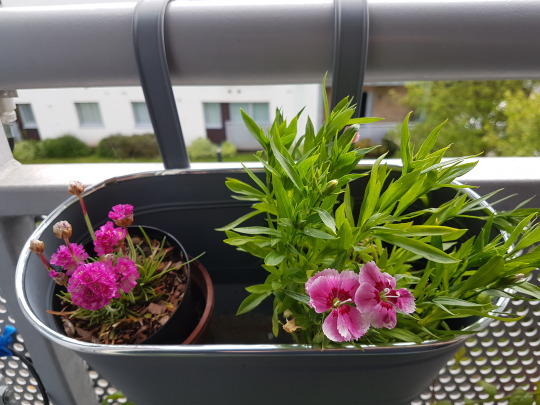



It's been a while since I did a plant-update! So have some pretty pictures of my pretty outdoor plants.
The Dianthus has given it's first flowers of the season, and I got a new plant to join it! That's Sea Thrift (Armeria maritima armada), the domestic cousin of a wildflower which is found commonly along coastal cliffs in my part of the world.
The strawbs are starting to look healthier than they were, though I haven't seen any flowers or hint of berries yet. I remain optimistic.
Similarly, the bluebs bush is looking happier than last year, with lots of little white flowers which indicate lots and lots of fruit 😋️ When the housemate commented on how pretty it looked with all the flowers, I mentioned that meant we "were in for a fine harvest"... which promptly spurred lots of friendly mocking about "Farmer Dru", "combine harvesters" and "huge tracts of land" 🙄️😅️
The winter heather has been moved along to the only-just-accessible side of the balcony to make space for some promised tomato plants. I've also been promised some more flowers, so I think I'm going to need that second over-balcony basket soon.
The indoor plants are fine too - the amaryllis didn't get watered until too late in the season I think, so it's just stuck out this one long leaf. The Aloe is doing what Aloes do. The Bird of Paradise plant still hasn't flowered, just puts out a new leaf every few months - it's needed to be repositioned because it was trying to attack the window. The zebra plant and cactus are probably the most grumpy with me. They really need potting out, but I need to rummage Mum's greenhouse for correct sized pots first. Succulents don't like going up pot sizes too fast and I don't have anything appropriate.
The various LEGO flowers need dusting, but otherwise look beautiful too 😉️
3 notes
·
View notes
Text
Flowers of Finland
Anemone hepatica (common hepatica)
Arabidopsis suecica
Asperula tinctoria (dyer's woodruff)
Caltha palustris (marsh marigold/kingcup)
Campanula patula (spreading bellflower)
Campanula uniflora (arctic bellflower)
Carduus acanthoides (broad-winged thistle)
Chamaenerion angustifolium (rosebay willowherb)
Convallaria majalis (lily of the valley)
Cornus suecica (dwarf cornel)
Dianthus armeria (deptford pink)
Galeopsis speciosa (large-flowered hemp-nettle)
Geranium sylvaticum (wood cranesbill)
Geum rivale (water avens)
Hypericum perforatum (St John's wort)
Linum usitatissimum (common flax)
Lythrum salicaria (purple loosestrife)
Medicago sativa (alfalfa)
Noccaea caerulescens (alpine pennycress)
Nuphar lutea (yellow water-lily)
Nuphar × spenneriana
Ononis arvensis (field restharrow)
Polemonium caeruleum (Jacob’s ladder)
Prunus padus (bird cherry/hackberry)
Sabulina rubella
Saxifraga cespitosa (tufted saxifrage)
Saxifraga rivularis
Tripleurospermum maritimum (false mayweed/sea mayweed)
Vaccinium vitis-idaea (lingonberry)
Veronica agrestis (green field-speedwell)
Viola canina (heath dog-violet)
Viola riviniana (common dog-violet)
Viola tricolor (wild pansy)
1 note
·
View note
Photo
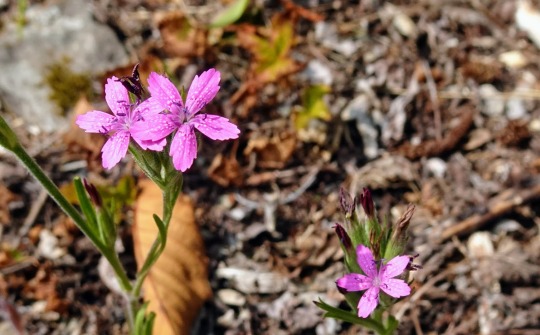
This Wednesday’s Weed is Dianthus armeria, a really pretty flower found here in Lewis County, Washington State, where it does not belong. It’s native to Europe, but has been spread to North America and New Zealand. Its common names include grass pink and Deptford pink. Dianthus flowers are called pinks not because they’re often pink (and they really are!), but because of the serrate petals that look almost as if they were cut with pinking shears. In fact, the color pink was named for Dianthus pinks!
58 notes
·
View notes
Text
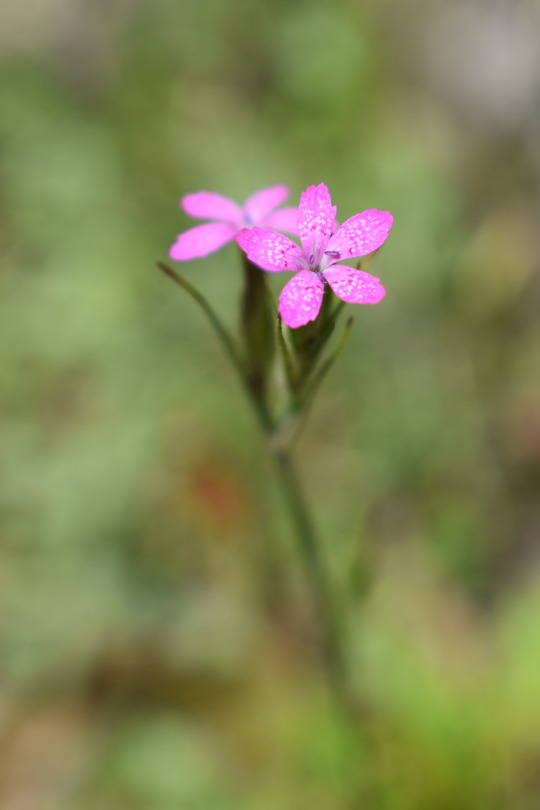
Deptford Pink Dianthus armeria Caryophyllaceae
Photograph taken on July 21, 2023, at Mono Cliffs Provincial Park, Mono, Ontario, Canada.
#wildflowers of southern ontario#pink#Deptford Pink#Dianthus armeria#Dianthus#Caryophyllaceae#Mono#Mono Cliffs#Mono Cliffs Provincial Park#provincial park#Ontario#Canada#flora#wildflowers#flowers#wildflower
9 notes
·
View notes
Photo

Deptford Pink,
Dianthus armeria
A native to Europe, now fairly invasive in the Appalachian Mountains.
Although this photo was taken in TN, there wasn’t one point of any excursion in Appalachia where i did not see this coming up in a trail opening.
1 note
·
View note
Text

6/8/21
1 note
·
View note
Photo

虫取撫子[Mushitorinadeshiko] Silene armeria
虫[Mushi] : Insect, worm
取[Tori] : To take, to catch, to capture
撫子[Nadeshiko] : Dianthus
Native to Southern Europe. It was introduced as an ornamental during the Edo period (1603-1868,) and has become wild today. It is so named because it glues insects with mucus secreted from upper part of the stem. But it is not an insectivorous plant.
It is also known as 小町草[Komachisō]. 草[Sō] means grass. https://en.wikipedia.org/wiki/Ono_no_Komachi
13 notes
·
View notes
Note
flowers for a forbidden (particularly lgbt+) romance? bonus if they can be found in scandinavia ✨
aIt has been ages, but we have an ask floating around this blog about secret relationships. Which is essentially what this comes down to in flower language. Even better we have a little secret love tag as forbidden as a meaning doesn’t exist. So let’s start with that, and see what we can add to that.
You might also find our feelings of love tag interesting. (An umbrella tag for romantic and platonic.)
Victorian flower language
alstroemeria – devotion
amaranth (globe) – unfading love, immortality
amaryllis – pride, timidity, splendid beauty, haughtiness
ambrosia – love returned
anemone – forsaken, frailty
apple – temptation
aspen – excessive sensibility, lamentation, fear, groan
butterfly orchis – gaiety
carnation (red) – my heart aches for you, admiration, my heart breaks
citronella – homosexual love
cobaea – gossip
dogwood – love undiminished by adversity, durability
evergreen thorn – solace in adversity
flora’s bell – without pretension
honeysuckle (coral) – the colour of my fate
lily (yellow) – gay, gratitude
locust tree (green) – affection beyond the grave
milk vetch – your presence softens my pains
mistletoe – I will rise above all, I surmount (all) difficulties, kiss me, affection, difficulties, I climb to greatness, parasite
mullein – take courage, good nature
pine (spruce) – hope in adversity
poplar (black) – courage
protea – courage
rosebud (stripped of thorns) – I fear no longer I hope
spindle tree – your charms are engraven on my heart
toothwort – concealment
willow (french) – bravery and humanity
wormwood – do not be discouraged, absence
Hanakotoba
alstoemeria – longing for the future, sustainability, exotic
astilbe – visit of love, freedom
azalea (white) – happy to be loved by you, satisfaction
chamomile – power born from adversity, endure adversity
cleome – secret meeting, drunk on your appearance
crown-of-thorns – endure adversity, kiss early
deutzia crenata/ utsugi – secret, old-fashioned
dracaena fragrance (tree of happiness) – happiness that cannot be hidden, happiness
edelweiss – courage, important memories
gladiolus – secret meeting, beware, memory, oblivion, victory
iris/ayame (kakitsubata) – happiness always comes
loquat – secret confession, confessing to you, healing
mimosa (acacia) – secret love, friendship
nigella – secret joy, embarrassment
primula (red) – secret of beauty, achievements without trust
stock (white) – secret love, compassion
Some of the above, or rather some species of the above can be found in Scandinavia. Be aware however that we cannot vouch for either flower language having had exactly this particular species in mind given their origin. Yet there is also no way to say a more general application doesn’t work. (A primrose is a primrose regardless of species to most people).
Denmark
pines of Denmark
primula veris
Norway
artemisia norwegicia
primula veris
salix arbuscula/salix artica/salix lantana (all willows but none of them the French willow)
Sweden
salix arbuscula/salix artica/salix lantana (all willows but none of them the French willow)
Iceland
salix arctica/salix phylicpholia (both willows, but also not the French willow)
Faroe Islands
salix arctica/salix lantana/salix phylicpholia (all willows, but also not the French willow)
Finland
dianthus armeria
salix arbuscula/salix lantana/salix phylicpholia (all willows, but also not the French willow)
That being said even if the flowers above aren’t native to Scandinavia, given the right circumstances they could still grow, or be bought. However, my instructor once did tell us how costly flowers are in northern countries due to the cold temperatues and more specificically that it seems to be custom to add an extra sheet of packaging for each degree below 0°C.
– Mod Jana
Disclaimer
This blog is intended as writing advice only. This blog and its mods are not responsible for accidents, injuries or other consequences of using this advice for real world situations or in any way that said advice was not intended.
#flower language#writing advice#victorian flower language#hanakotoba#japanese flower language#forbidden love#feelings of love#ask answered#mod jana#self referral
23 notes
·
View notes
Text
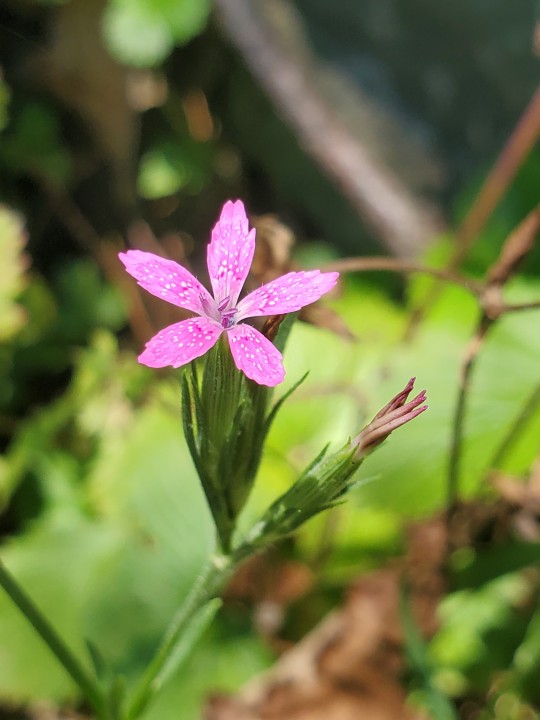
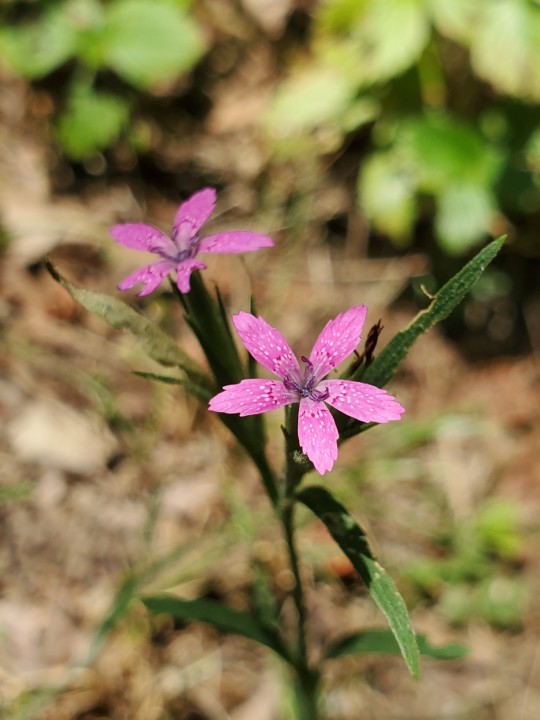
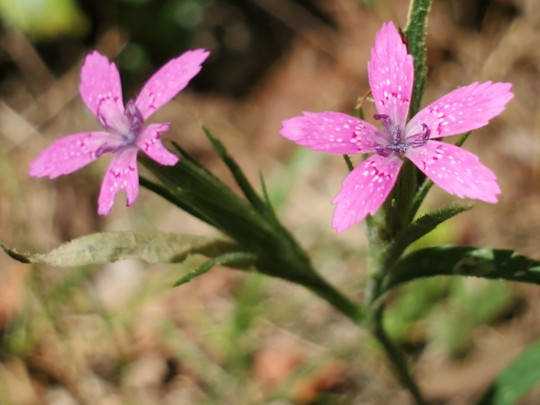
Deptford Pink, Dianthus armeria
3 notes
·
View notes
Text
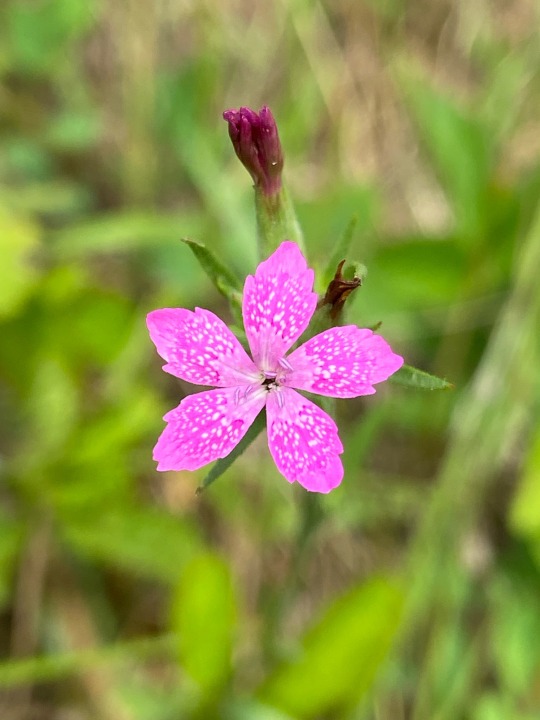
Deptford Pink (Dianthus armeria), native to Europe but naturalized in North America. cannot emphasize enough how tiny this gorgeous little flower is - no bigger around than the head of a tack
7/7/22
3 notes
·
View notes
Photo

Deptford Pink
This Deptford Pink (Dianthus armeria) was found glowing in the early morning shadows of a sand prairie.
25 notes
·
View notes
